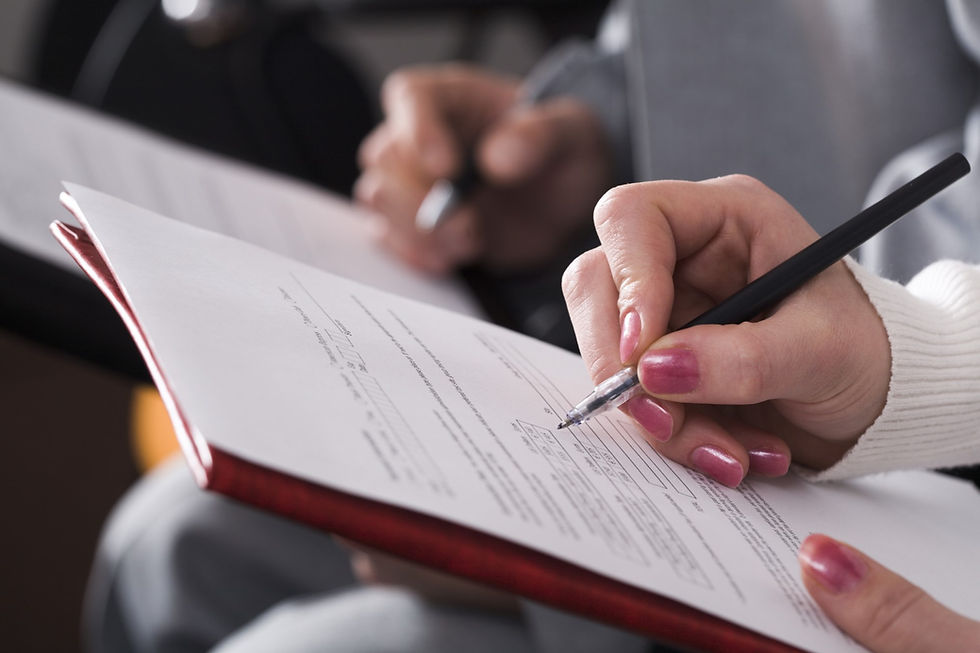The Chapter 7 Bankruptcy Process
- Brock Foley

- May 20, 2020
- 4 min read
Chapter 7 bankruptcy is one of the two, the other is Chapter 13, forms of bankruptcy typically available to individual consumers. While Chapter 13 bankruptcy is a restructuring of debt, chapter 7 is a liquidation, and it is only available to people under a certain income threshold.
Chapter 7 Bankruptcy is a complicated and involved process. There is a lot that needs to happen before your debt will be discharged. Looking over the steps to a Chapter 7 bankruptcy beforehand can help you understand what will need to be done and decide whether you want to hire an attorney.
Chapter 7 bankruptcy can be a lifeline for those struggling with inescapable financial difficulties. Through this process a person can have parts, or even all, of their debt eliminated.
These are the basic steps of a Chapter 7 Bankruptcy.

1. Determine Eligibility
Not everyone can file a Chapter 7 bankruptcy. Essentially, if you make too much money you have to file under Chapter 13. There are two ways to determine whether you are eligible to file under Chapter 7.
1) If your income over the last six months is less then the median income for your state you may be eligible to file under Chapter 7.
2) If you satisfy the means test you may be eligible to file under Chapter 7. The means test is a form that compares your income to the your debts and determines if you have enough to at least pay part of your debts for a 5 year period.
You can find the form for the means test here. There are some exceptions to the means test.
Even if your income satisfies one of these two tests you may still lack eligibility if you; a) have obtained a Chapter 7 discharge within the past 8 years or have filed a Chapter 13 bankruptcy in the last 6 years, or b) you have had a bankruptcy dismissed for; violating a court order, acting fraudulently, or you requested dismissal after a creditor requested relief from the automatic stay.
2. Classification of Debt
If you are eligible to file under Chapter 7 the next step is a classification of debts.
There are two kinds of debt: 1) secured debt and 2) unsecured debt. Secured debt is debt where property has been pledged as collateral (i.e. your mortgage). An unsecured debt is a debt without property collateral (i.e. credit card debt).
As you prepare to file you will need to figure out who each of your creditors are and determine whether the debt owed is secured or unsecured.
3. Classification of Property
During the bankruptcy process a court appointed trustee will sell your property to cover as much of your debt as possible. However, the trustee will not sell exempt property.
Exempt property is property either state or federal law has declared unavailable to creditors trying to collect debt.
Here is a list of exempt property in Missouri.
Only property with value will be sold to cover your debts.
Before filing you will need to know what property is exempt from liquidation and what is not.
4. Credit Counseling Program
Before you can file you are required to complete a court-approved credit counseling program. This must be done within the 6 months before filing.

5. Filling out Forms
Chapter 7 bankruptcy will require you to fill out a lot of forms, the primary form being the Voluntary Petition. Other forms require lists of all of your property, debts, income, and expenses. These forms must be thoroughly and accurately filled out. If you do not list a creditor, the debt owed to that creditor will not be discharged.
6. Filing Bankruptcy in Federal Court
When your forms are completed and you have thoroughly listed everything the next step is to actually file bankruptcy in Federal Court. Typically all forms are filed together.
In an unusual emergency situation you may have the option to file only the Voluntary Petition, with the rest of the paperwork following within 14 days.
After filing your paperwork with the court an automatic stay is enacted which prevents creditors from taking any action to try and collect on the debt owed.
7. Trustee Appointed and Creditor Meeting
After you file the Voluntary Petition the court will appoint a trustee. That trustee will take control of your property, it is her job to assure that your creditors are paid as much as possible. She will sell your property to pay your creditors.
Within two weeks of filing you will receive notice of the Creditor Meeting. This meeting is run by the trustee. You must appear and be available to answer questions from the creditors. Your creditors do not have to appear though and some may choose not to show up at all.
8. Debtor Education Course
After the creditor meeting but before discharge you must complete a debtor education course offered by a court-approved provider.
9. Discharge
After the creditors meeting any creditors and the trustee have 60 days to object to discharge or to the discharge of a particular debt.
If there is no objection, or after the objections are resolved, discharge occurs.
Discharge means that you no longer owe any of your dischargeable, unsecured debts and your creditors no longer have any legal right to seek payment.
You will need to continue making payments for any debt that was not discharged though. Child support, back taxes, or student debt are all examples of debt that cannot be discharged.

Although a Chapter 7 bankruptcy will show up on your credit report for up to 10 years, it can be exactly the lifeline you need if you find yourself in a desperate financial situation.
If you need help with a Chapter 7 bankruptcy filing please contact us. Our attorney can make a stressful and overwhelming process feel manageable.

Comments